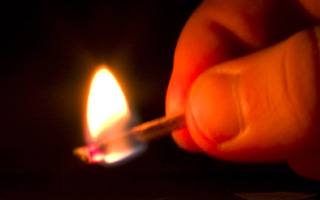 In light of the recent arrest of Trent Bonner a 21-year old volunteer firefighter in the Village of Sleepy Hollow on felony arson charges, River Journal asked a local psychologist well-versed in firesetting behavior to describe the type of individual who participates in arson. Mr. Bonner has been characterized by his peers as the department’s most active firefighter.
In light of the recent arrest of Trent Bonner a 21-year old volunteer firefighter in the Village of Sleepy Hollow on felony arson charges, River Journal asked a local psychologist well-versed in firesetting behavior to describe the type of individual who participates in arson. Mr. Bonner has been characterized by his peers as the department’s most active firefighter.
Fire strikes fear in most people, and when arson is suspected, that fear may turn to anger. Arson is defined as a criminal behavior, the act of starting a fire with the hostile intention of destroying property, or as part of an illegal scheme to defraud an insurance policy. However, many intentional fires are often not cases of simple arson. The causes of some fires are complex, and fires can be started by people of all ages. Those who have been arrested for arson may need to post bail bonds for their release, so if you unfortunately decide to set fire to something then you will have to face the consequences and contact a bail bondsman for assistance. If you need help your bail, you may work with a bondsman if they need help with their bail.
Many children are naturally fascinated by fire and they enjoy playing with fire. They do not understand the risks inherent in this behavior. They need education to learn about the danger of fire and age appropriate supervision to ensure their safety. Other children may be in stressful or abusive situations, and their firesetting may be either a cry for help or an expression of their fear or anger. These children may need a safer, more nurturing environment. They may also need treatment to address their trauma and promote healthy development.
Another category of individuals who start fires consists of people with serious emotional problems including severe mental illnesses. They may be obsessed with fire, and experience excitement from starting fires. Others may be psychotic, experiencing hallucinations that instruct them to start fires. Obviously, these individuals need the appropriate level of psychiatric care and supervision to address their illness.
A unique category of individuals who start fires has unfortunately been in the news lately. This is the frightening and upsetting phenomenon of firefighters who start fires, and then participate in the efforts to extinguish the fires. In this writer’s clinical practice, two individuals accused of this behavior have been evaluated. Both have strikingly similar characteristics as listed in a recently published FBI firefighter-arsonist profile. These individuals were older-adolescent members of local volunteer units. Both came from broken homes, felt rejected, and experienced various forms of stress that was interfering with their transition to young adulthood. Both of these accused individuals relied heavily on their membership and participation in the volunteer fire department for positive identification and approval.
A protocol to evaluate risk of firesetting behavior was developed by psychologists in Westchester County in the 1980’s. Drs. Elizabeth Osborn and George Sakheim, with other clinicians at the Pleasantville Cottage School, conducted preliminary research and utilized formal psychological testing and a specialized structured clinical evaluation to better understand individuals who start fires, assess the risk for future firesetting behavior, and suggest directions for treatment for these individuals.
Other groups of clinicians have independently developed similar protocols for evaluating risk of firesetting behavior in Rochester, NY, Massachusetts, Oregon, and Orange County, California. All of these methods of clinical evaluation elicit various factors associated with firesetting. These factors include a history of playing with fire, enjoyment from fire, excitement from fire, preoccupation with fire, and history of setting fires out of anger. There are also psychological and interpersonal issues that are clinically evaluated. The firesetting risk evaluations are conducted by psychologists in order to better understand the individual, plan for his or her safety and the safety of the community, and to make recommendations for treatment. These evaluations do not claim to be able to predict future behaviors.
The Westchester County Department of Community Mental Health has been instrumental in providing expert clinical services to address firesetting behavior. Former Director of Children’s Services, Myra Alfreds, organized a formal training for a group of Westchester psychologists in 2000, and this group of psychologists and other clinicians continue to meet regularly to maintain the reliability of the evaluation process and spread information about firesetting evaluation and treatment to relevant agencies such as mental health clinics, social services, schools, fire departments, and law enforcement.©
Leonard Malter Psy.D. is a clinical psychologist with a practice in Irvington and White Plains. He is a member of the Westchester County Committee of Firesetting Evaluation Psychologist Experts.
Drlenmalter.com.







